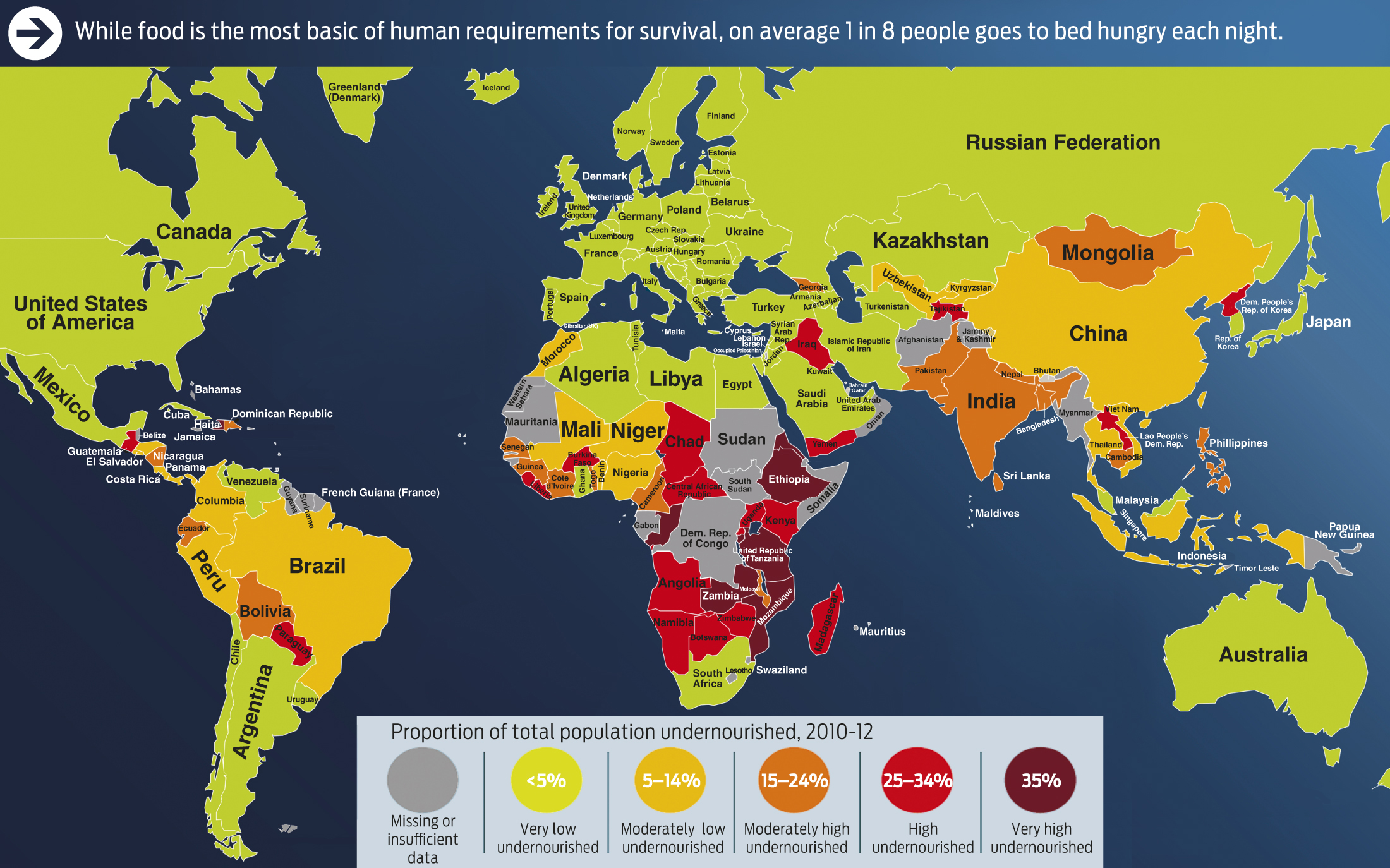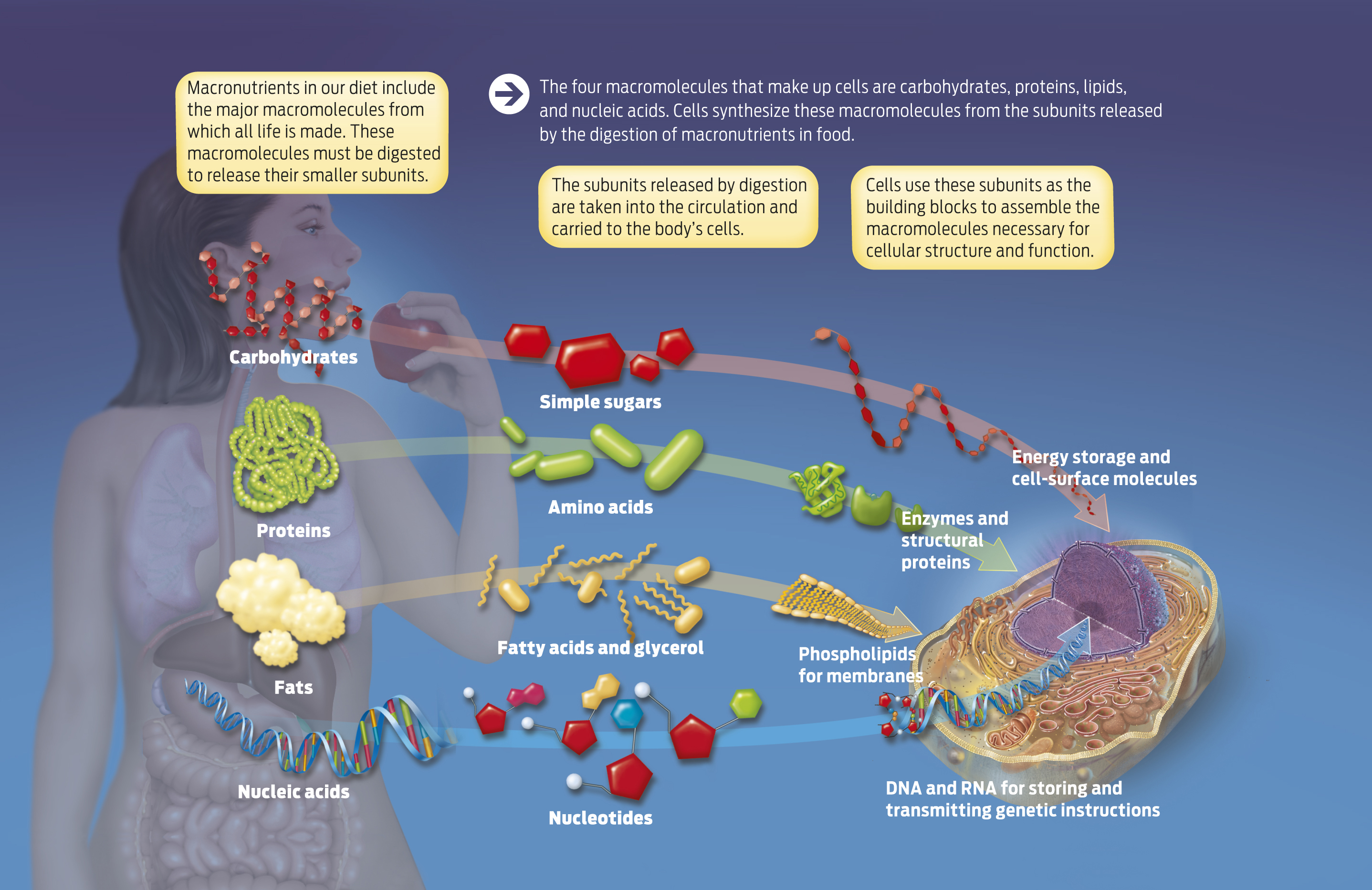THE ELEPHANT IN THE ROOM
In-Class Activity
Click here to access a unique activity focusing on micro- and macronutrients.
In 1994, Manary became a visiting faculty member at the University of Malawi School of Medicine. When he arrived, he asked the hospital director, “What's your biggest problem?” The director replied, “The malnutrition ward.” So that's where Manary chose to work.
It was a dismal and discouraging place: a large room where about 50 starving kids lay close to death on crowded cots, their bodies little more than skin and bone. About a third of the kids would die, despite the doctors' best efforts at rehabilitating them. This poor response rate was, Manary says, “the elephant in the room.”
Severe acute malnutrition—hunger and starvation medically defined—is the number one killer of children in the world. An estimated 3.5 million children die from malnutrition every year—more than the number who die from AIDS, tuberculosis, and malaria combined. Most of these deaths occur in sub-Saharan Africa, where grinding poverty is endemic, and food is scarce for large portions of the year (INFOGRAPHIC 4.1).

In Malawi, the crisis is particularly acute. The World Food Programme of the United Nations estimates that 1.3 million people, or about 11% of the country's population, will experience food shortages at some point during the year. Historically, more than half of all Malawian children are chronically malnourished, and one in eight dies from lack of food.
Why is food so scarce? Malawi is one of the poorest countries in the world, with a population of mostly subsistence farmers. The primary agricultural crops are corn and soybeans. Farmers also grow commercial cash crops for export, including tobacco, sugar cane, coffee, and tea. But agriculture is not easy in Malawi. Rain comes only once a year, from December to March, when it might rain every day. New crops are planted during this time, but the harvest won't be available until March. Quite often supplies from the previous year's harvest run out before the next one is in. They call it the hungry season.
Without enough food, people lack adequate nutrients, which provide the chemical building blocks our bodies need to live, grow, and repair themselves. All organisms are made up of chemical building blocks such as water, ions, and organic molecules (see Chapter 2). Because humans (and other animals) can't make these components from thin air, we need to obtain them from our diet. Nutrients also provide us with the energy needed to power essential life activities. Both building blocks and energy are crucial components of food, but for simplicity we will discuss them separately. This chapter focuses on food as a source of chemical building blocks; Chapters 5 and 6 consider energy—the fuel component of food—in more detail.
When experts talk about a nutritious diet, they mean one that provides all the nutrients our bodies need in appropriate amounts. Nutrients that the body requires in large amounts are called macronutrients. The macronutrients we need in our diet include carbohydrates, proteins, and lipids (commonly known as fats—three of the four organic macromolecules discussed in Chapter 2. Because most foods contain mixtures of these macronutrients, those of us who eat a varied diet that includes vegetables, oils, grains, meat, and dairy products can easily obtain all the macronutrients our bodies need (INFOGRAPHIC 4.2).
Macronutrients from the diet cannot be used directly by our bodies, in part because they are too large to be absorbed into the bloodstream from our digestive tract. To be useful, macronutrients must first be broken down into smaller subunits by the process of digestion (see Chapter 26). These subunits are small enough to be absorbed from the digestive tract, are taken up by cells, and used to build the macromolecules our cells need. For example, dietary carbohydrates from bread and pasta are broken down into simple sugars, which our bodies use to build an energy-storing carbohydrate called glycogen in liver and muscle tissue. Proteins from a steak are broken down into amino acids, which can be taken up and used to build new proteins, like those making up our muscles. Fats from our diet are broken down into fatty acids and glycerol, which are used to assemble the phospholipids that make up cell membranes.
The food we eat also contains nucleic acids, the fourth macromolecule making up cells. Although not considered macronutrients (because we need them in smaller amounts), nucleic acids are also broken down into smaller subunits, called nucleotides, which are used by cells to build DNA and RNA. Breaking down food to build up our bodies means that, quite literally, we are what we eat (INFOGRAPHIC 4.3).

To a certain extent, our bodies can compensate for a deficiency in one or another nutrient by synthesizing it from other chemical components. For example, if a particular amino acid is in short supply, cells may be able to make it from another amino acid that is in excess. But there are some nutrients that our bodies can't manufacture and which must be obtained pre-assembled from our diet. These are called essential nutrients.
In Malawi, most families subsist on a single crop: corn. While corn is a good source of complex carbohydrates, like starch, it is not a significant source of protein or fat. This leaves out many essential nutrients needed for a healthful diet, including vital amino acids. From starting materials in food, adults can synthesize 11 of the 20 amino acids they need to make proteins. The other nine must be obtained pre-assembled from our diet. Because our body can't manufacture them, these nine amino acids are called essential amino acids (A few more amino acids are considered essential for infants and children.) Animal products such as meat, eggs, fish, and dairy are the richest sources of essential amino acids, but in many places around the globe, these foods are luxuries people can't afford.
In 1999, when Manary first looked around for an alternative treatment for severe hunger, he considered sending kids home with a bag of ingredients, such as a corn flour and soy, to make traditional meals. He quickly realized, however, that this would not work. First, such foods would need to be cooked, and cooking is extra work for an already overburdened family. Second, severely malnourished children would need to eat many bowls of such foods per day in order to obtain enough nutrients to recover. Third, the food wouldn't keep.
Peanut butter, on the other hand—especially when it has been fortified with additional nutrients—is a highly effective way of delivering the most nutrients per spoonful of food. Technically, it's known as a ready–to–use–therapeutic food (RUTF), which means it is a complete source of nutrition. “If you eat RUTF you don't need to eat anything else,” says Manary. “You're getting everything you need—period.”
The RUTF that Manary uses is made up of four main ingredients: full-fat milk powder, sugar, vegetable oil, and peanut butter. Peanut butter is a useful treatment for malnutrition partly because it is full of fat, which helps kids put on weight fast. “Peanuts are the only plant I know of that has 50% fat, when you get rid of the water,” says Manary. But the fattening quality is only part of peanut butter's appeal. Because it contains very little water and has a pasty consistency that keeps out air, peanut butter is naturally resistant to spoiling; bacteria can't grow without water. It also doesn't require cooking and is therefore ready to eat. And it's full of protein, a crucial macronutrient for growing children. All these things make peanut butter a near-perfect therapeutic food, supplying children with the necessary fats, proteins, and essential amino acids (from the milk powder) that they would otherwise lack.
 If you eat RUTF you don't need to eat anything else. You're getting everything you need—period.
If you eat RUTF you don't need to eat anything else. You're getting everything you need—period.
—MARK MANARY
Incidentally, many people in industrialized countries have peanut allergies, but in the developing countries such allergies are rare or nonexistent, he says. That has more to do with the way we train our immune systems in our hyperscrubbed world, Manary explains, than with any intrinsic quality of peanuts.

